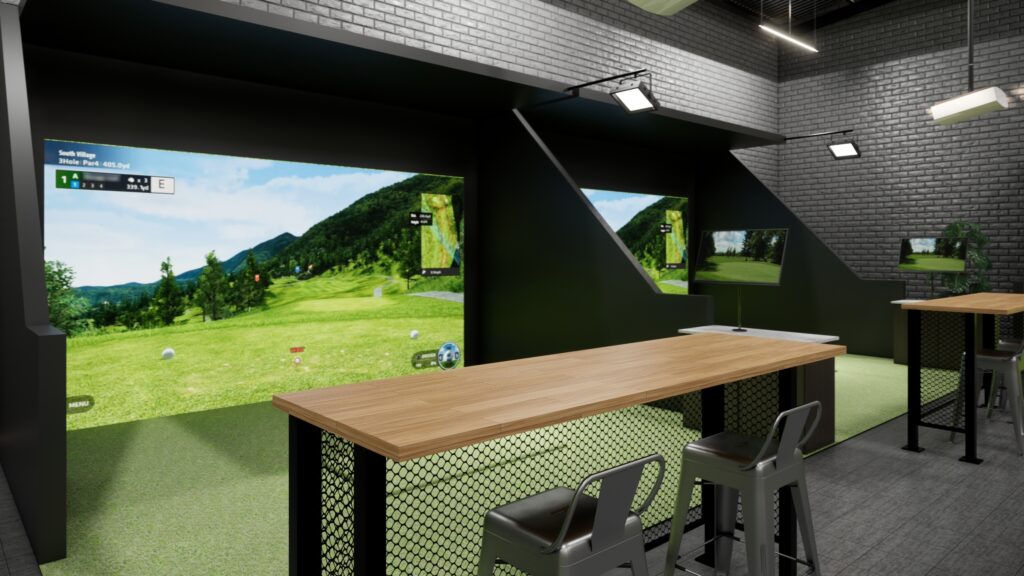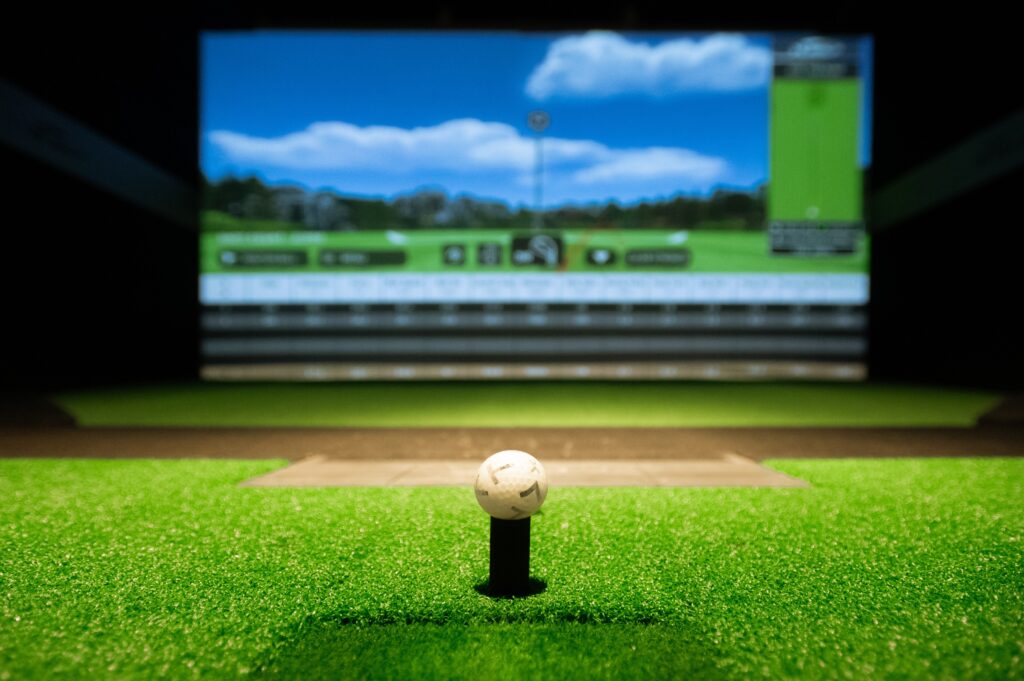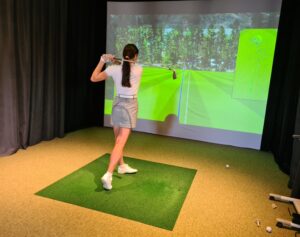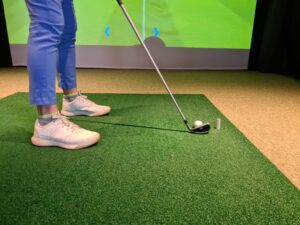When planning an indoor golf setup, one question quickly rises to the top of the list: how tall ceiling for golf simulator? Ceiling height plays a vital role in whether a simulator can be installed comfortably and safely. Too low, and you risk damaging equipment—or worse, injuring yourself. Too high, and you may struggle with screen placement and projector alignment.
While many factors influence an ideal simulator build—width, depth, and lighting among them—ceiling height is one of the most inflexible. You can rearrange a room’s layout or adjust furniture, but unless you’re doing a renovation, you can’t just raise the roof. That’s why knowing the required and recommended ceiling heights before investing in a simulator is crucial.

Minimum Ceiling Height Requirements
Most golf simulator setups recommend a minimum ceiling height of 9 feet. This allows the majority of players to swing a driver comfortably without interference. Players with average or moderate swing planes will usually find 9 feet adequate, particularly when hitting irons and wedges.
However, this is the absolute minimum—anything lower than 9 feet can feel claustrophobic, especially with longer clubs. It also introduces risk: players might hit the ceiling during a full swing, which can damage both the club and the ceiling surface.
Ideal Ceiling Height for Golf Simulators
The ideal ceiling height for a golf simulator is typically 10 to 10.5 feet. This gives most golfers the freedom to swing their driver naturally, even with a steep or aggressive plane. For left-handed or tall players, additional clearance is especially helpful.
A 10-foot ceiling also opens the door to more flexible projector placement and larger screen sizes, which enhance the immersive experience. In commercial settings like Sim Cup Golf in Palm Bay, simulators are installed with generous vertical space to accommodate players of all builds.

Considerations for Taller Golfers
Tall golfers or those with long arms and faster swing speeds may require more than 10 feet of clearance. Even at 6’3” or above, a player might scrape the ceiling during a full swing if the room is tight.
The best way to test your ceiling height before installation is to mimic your swing in the space using a driver. Raise your club slowly during your backswing to identify any contact points. It’s always safer to have a few extra inches of clearance than the minimum standard.
Ceiling Height and Club Selection
Lower ceiling heights often force players to alter their swing, or to restrict play to shorter clubs. A space with 8.5-foot ceilings may only allow practice with irons or wedges—fine for short game work, but frustrating if you want to simulate full rounds.
Without room to swing a driver, you miss out on practicing tee shots, which can limit your ability to work on all aspects of your game. If you want to use every club in the bag, including the driver, 9.5–10 feet should be your target height.

Commercial and Luxury Installations
In commercial spaces or high-end home builds, ceilings can range from 10 to 12 feet. This extra headroom not only supports comfort and playability but also allows for premium projector systems, overhead lighting grids, and acoustics that elevate the experience.
Sim Cup Golf’s bays are designed with extra ceiling clearance to provide the most authentic experience possible. It’s part of why our location attracts golfers who want both performance and luxury.
Ceiling Shape and Slope
Another factor to consider is ceiling shape. Vaulted or sloped ceilings can pose challenges for projector mounting or netting enclosures. Even if the center point is 10 feet, angled sides may interfere with the swing arc or enclosure framework.
Flat ceilings provide consistent height across the room and make installation easier. If your room has beams, ductwork, or drop ceilings, measure the lowest point when determining usability.
Acoustic and Safety Considerations
When your swing touches or nearly touches the ceiling, it’s not just inconvenient—it can be loud and potentially dangerous. Impact with ceiling surfaces or light fixtures can damage equipment or create safety hazards.
Acoustic tiles and padded ceiling panels are sometimes installed to soften sound and provide a margin of protection. If you’re dealing with borderline height, these additions may help create a safer and more comfortable environment.

Alternative Room Choices
If your main room has an 8-foot ceiling, consider whether there’s another room in your home with more vertical clearance. Finished basements, garages with open rafters, and bonus rooms often have taller ceilings that make them better candidates for simulators.
Don’t forget that insulation, lighting, and airflow are also important. A taller garage with proper finishing can be just as comfortable as an indoor room if it’s properly outfitted.
Custom Builds and Drop Floors
For homeowners determined to build their dream simulator in a room with low ceilings, there are creative options. Some users create recessed hitting platforms or drop floors to gain an additional 6 to 12 inches of headroom. This can be an effective workaround but adds complexity and cost.
In luxury home projects, some clients opt to raise a section of the ceiling entirely. While not practical for most, it shows how central ceiling height is to achieving the perfect simulator experience.

Conclusion
So, how tall ceiling for golf simulator? While 9 feet is the widely accepted minimum, 10 feet or more is strongly recommended for full functionality, especially when using a driver.
Ceiling height is one of the most important—and least adjustable—aspects of a golf simulator build. The right height ensures comfort, safety, and performance. Before you invest in equipment, take careful measurements and consider the needs of everyone who will be swinging.
At Sim Cup Golf, our facility showcases best-practice installations with optimal ceiling clearance, offering a safe and spacious environment to enjoy simulated golf year-round. Seeing a proper setup in person can make your own planning process much easier.
Helpful Resources:







